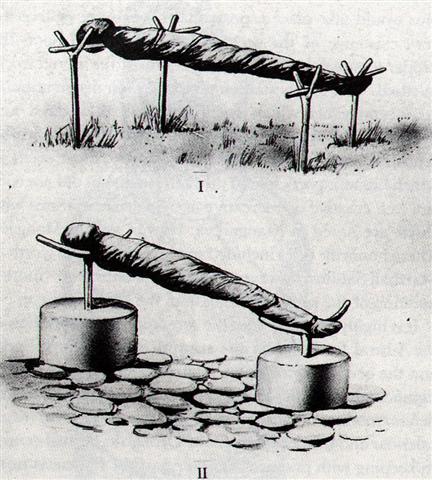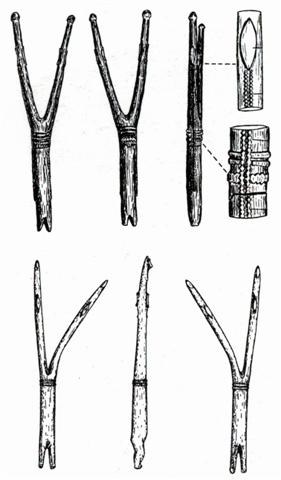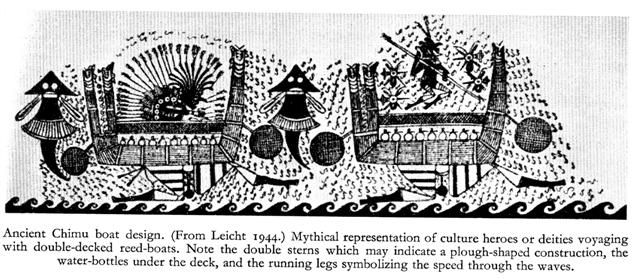|
TRANSLATIONS
Even though we now have completed the documentation of toa in the glyph dictionary, several questions remain. If toa glyphs depict dry wood planks or pillars, useful for building e.g. canoes or houses, the sign of Y can carry more meanings. That it is a sign of death is fairly clear, a consequence of denoting the season of straw, when growth has temporarily stopped. This meaning of Y is evidenced by the biers for mummification:
Then we should remember the eketea twigs:
... For the best-documented esoteric meaning of the Y-shape we must look to Mangareva, where 'forked stick' wands and 'stick man' effigies called eketea were used in mortuary, fertility and initiation rituals conducted by priests (taura) at which rogorogo and wood craftsmen participated. These interesting objects were highly abstract depictions of the human form which had legs and feet indicated and carved decorative bands around the midpoint. One example has oval 'eyes' carved on each of the two parallel parts forming the upright forks. In Mangaia, the forms of the 'forked sticks' erected on marae during the initiation of the Temporal Lord are not known. It is very clear however, that erecting these 'forked sticks' represented the visible commitment of the individual district chiefs to act as toko (prop or support) to the Temporal Lord as he undertook his duties ... To 'prop or support' the 'Temporal Lord' sounds close to what we have found in the night calendar of Tahua. These 'props' are 'sky proppers' like the stone moai statues. But they are made of wood, not stone. And they have the Y-sign, denoting the straw season, while the moai are formed like ure and - I think - are representing the spring season.
The 'Ark of Noah' implies 'to go aboard' (eke), as if the canoe were a female who should be mounted (eke). The ships to 'mount' could be old and half forgotten ancient Y-formed ones :
With Y indicating 'dry wood', the idea of using Y-signs to - magically - help sun return comes naturally. A new fire needs dry wood. Thursday is the day of wood, thunder and lightning. If Sunday-Wednesday describes the path of fire from high up down as far as you can get, then it is natural to have a new fire at Thursday. This new fire is not the sun, it is the progenitor of the sun. But it is like the manmade new year fires. Beyond winter solstice two months are needed before sun reappears. Likewise beyond a new ignition (Thursday) two days are needed before Sunday comes again. |


